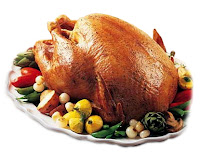Have you ever noticed how appealing everything looks on a holiday table? The turkey, cooked to a beautiful golden brown, sits as a centerpiece of perfection. The green beans with a hint of garlic and balsamic are served on a silver platter. The breads are placed in lovely woven baskets lined with a festive towel. There is cranberry sauce and mashed potatoes and squash and every dish looks more appetizing than the next. Eagerly we fill our plates with a little of everything and when we sit down, we glance at the plate. It seems a bit full, slightly daunting. But we don’t care. It’s the holidays. On the holidays, we feast.
Afterwards, we unbutton our pants and begin to feel a little remorse. It all looked so good on the table, but when the table is cleared, we take Zantac and promise to start the diet again tomorrow.
As I meet and talk with teachers about better reading and writing instruction, I realize that balanced literacy is perceived a lot like the holiday feast. Mini lessons. Guided reading. Shared reading. Choral reading. Reading conferences. Read aloud. Strategy Groups. Word Study. Interactive writing. You name it. It’s all beautifully packaged and presented at conferences, workshops, faculty meetings, and books by renowned and respected experts. As educators, we take bits and pieces of these ideas and put them on our teaching plate and attempt to clean up every morsel. However, at the end of the teaching day, we are often left with something akin to the indigestion we feel at the end of the feast, only now, we don’t have a fasting plan that will restore us to our previous level of comfort in a relatively short amount of time. The dissonance creates feelings of exasperation and worse, inadequacy. We wonder, how is this all do-able?
I have met countless teachers ready to throw in the towel and quit balanced literacy. They are ready to go back to the basal and traditional reading groups and when this happens, I remind them that nobody gets it all right on the first day out. Even Vincent Van Gogh, master painter, said, “I am always doing what I cannot do yet, in order to learn how to do it.” And that’s what we have to do, too. Yes, it is true, the people selling balanced literacy present it on silver platters, but that is only because they have had lots of time to practice serving it up on paper plates. Like Van Gogh, they kept at it. They sought out whatever information they could: they read, they planned, they practiced, and they talked to whoever they could about it.
Contrary to how it may feel at times, balanced literacy is not a feast. It is the meant to be a steady diet of solid reading and writing instruction. And like any good diet, it needs to be learned in moderation with the knowledge that from time to time, we’ll mess up. When that happens, we call it a day, and start new tomorrow, knowing that it won’t be long before we, too, will be ready for the fine china.


No comments:
Post a Comment